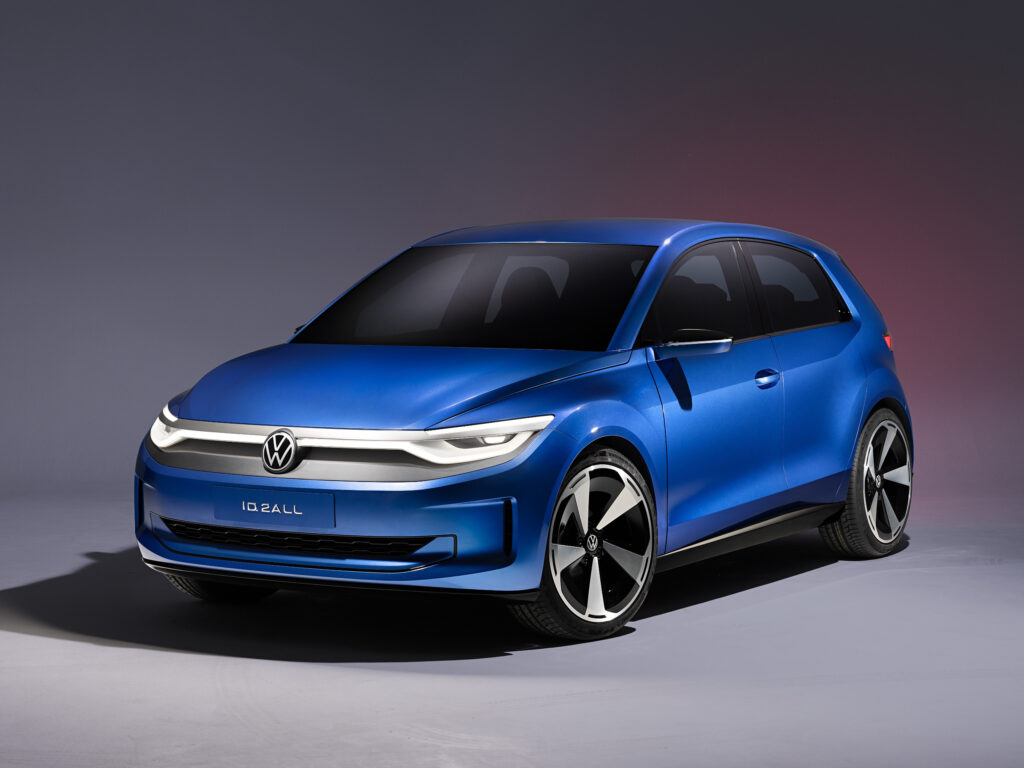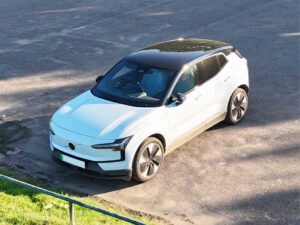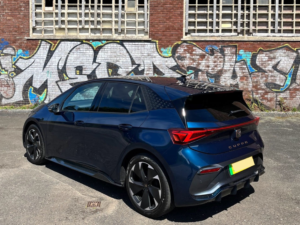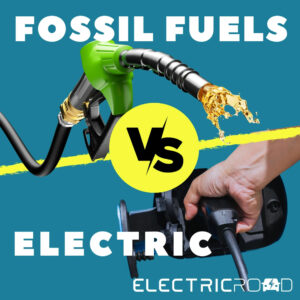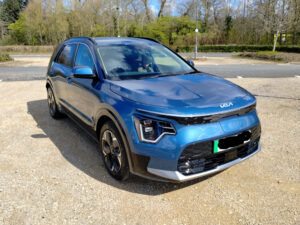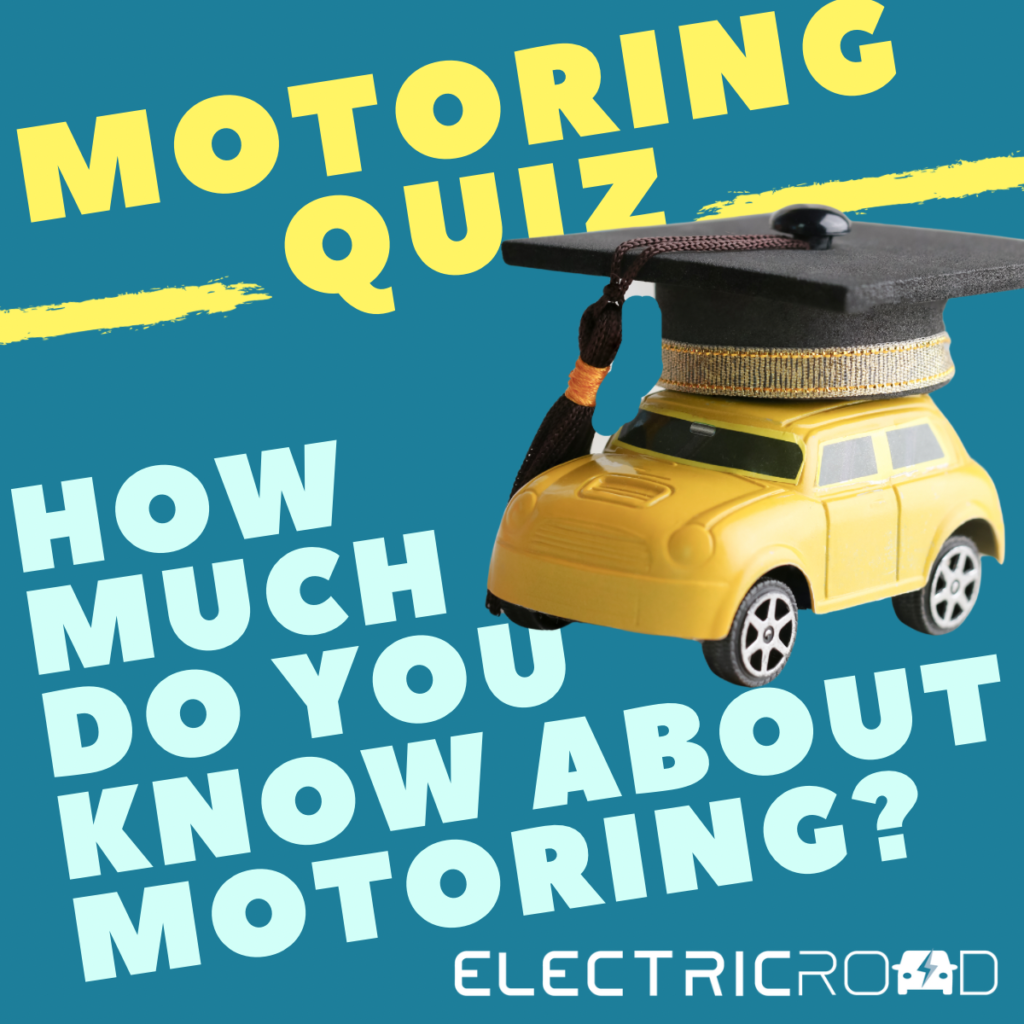Volkswagen has provided the first glimpse of the ID. 2all concept vehicle.
The production version will be based on the MEB Entry platform and is one of ten new electric models that Volkswagen will launch by 2026.
Thomas Schäfer, CEO of Volkswagen Passenger Cars: “We are transforming the company rapidly and fundamentally – with the clear objective of making Volkswagen a genuine Love Brand. The ID. 2all shows where we want to take the brand: close to the customer, top technologies and a fantastic design. We are implementing the transformation at pace to bring electric mobility to the masses.”
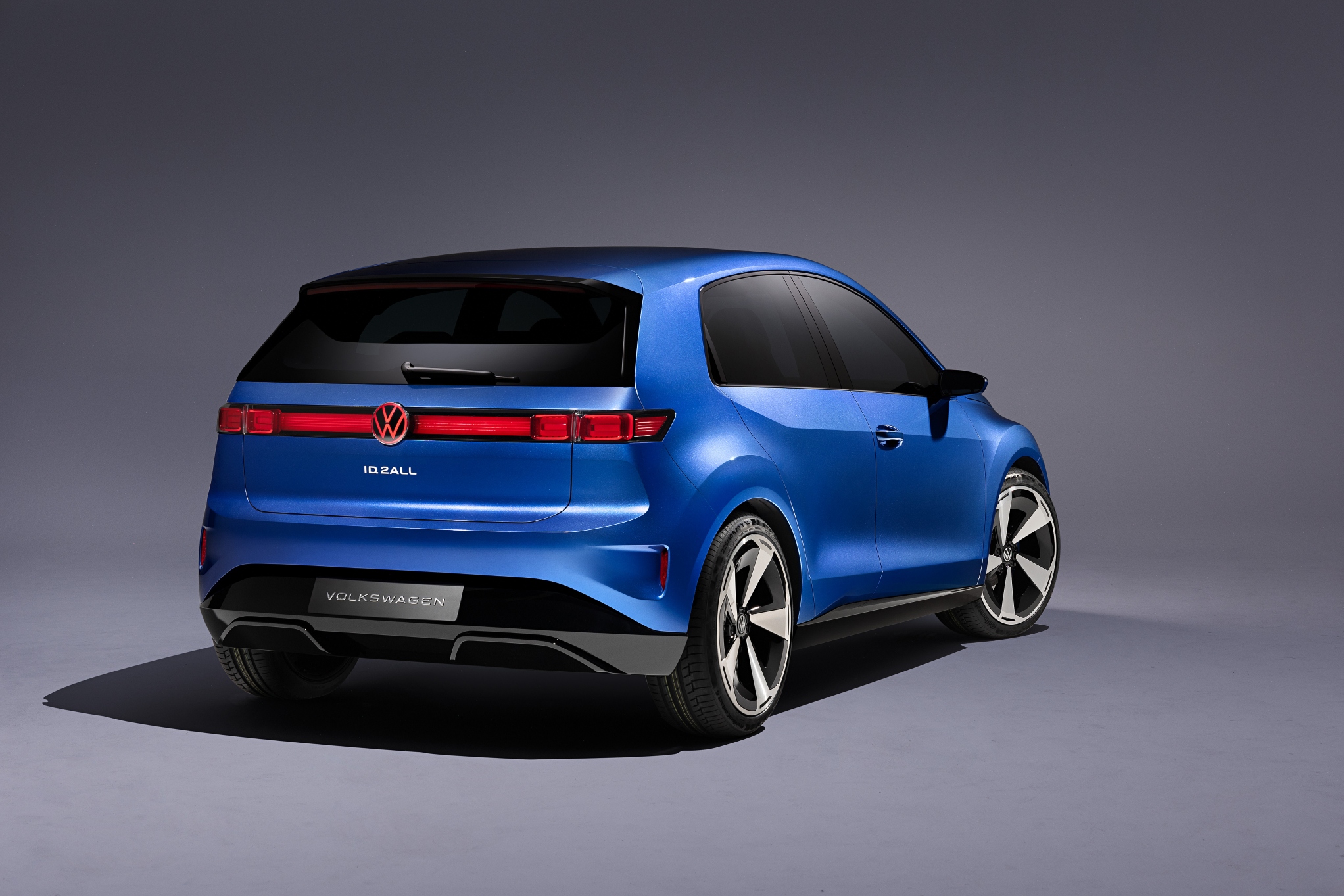
Volkswagen will begin the production version of the ID. 2all for the European market in 2025. The goal is a starting price of less than 25,000 euros.
Are you seriously considering your first or next EV? Then visit Electric Road’s CAR FINDER to get the right car for you!
Development of the ID. 2all is based on the latest evolutionary stage of the modular electric drive (MEB) platform. Kai Grünitz, Member of the Brand Board of Management responsible for Development: “The ID. 2all will be the first MEB vehicle with front-wheel drive. We are exploiting the great flexibility offered by our modular electric drive (MEB) platform and will set new standards in terms of technology and everyday usability with the MEB Entry platform.”
With the enhanced MEB Entry platform, the ID. 2all is equipped with particularly efficient drive, battery and charging technology. It has a powerful electric drive motor with an output of 166kW/226 PS and will have a calculated WLTP range of up to 280 miles.
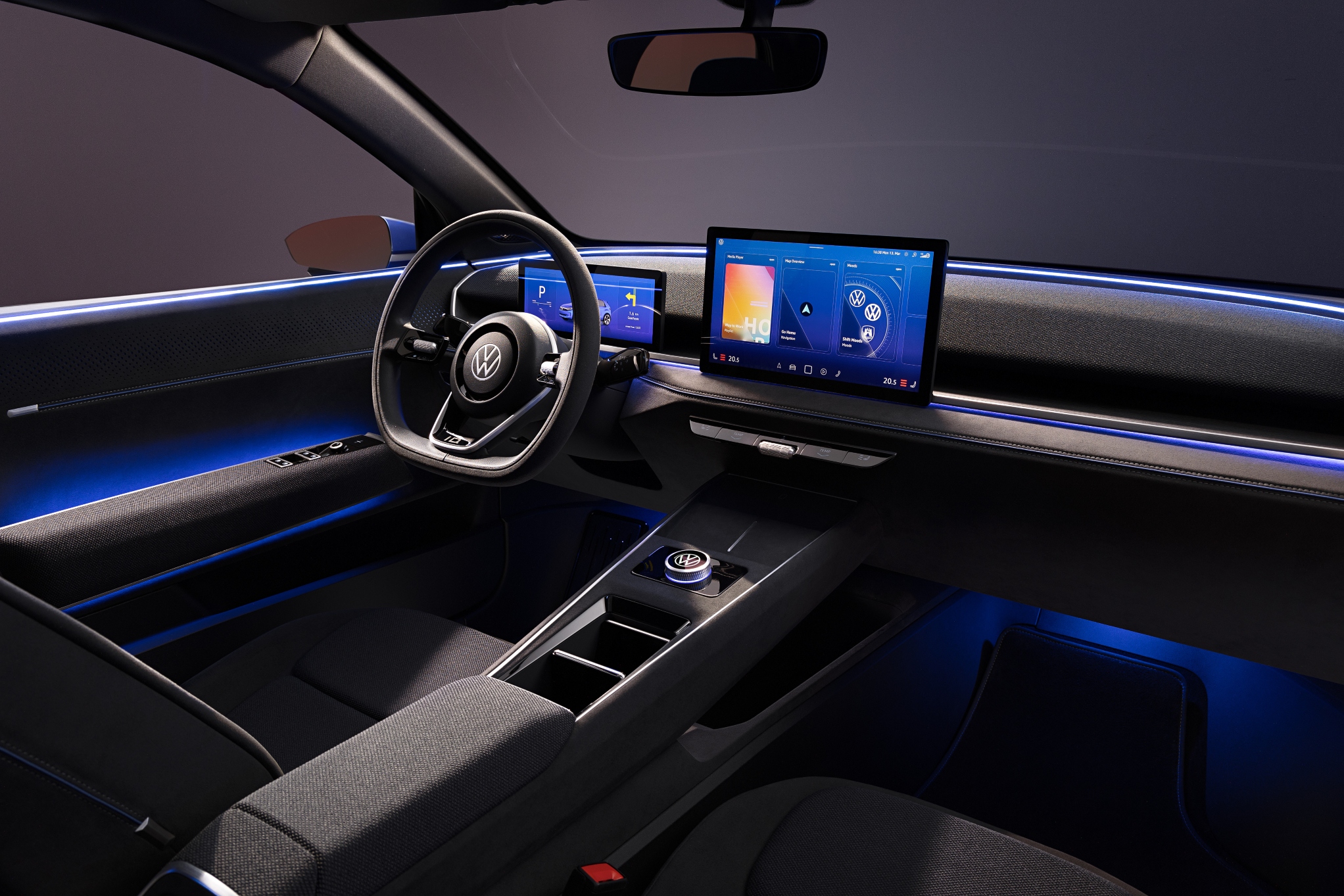
The production version of the ID. 2all is one of ten new electric models that will be launched by Volkswagen by 2026. This year alone sees the introduction of the new ID.3, the ID. Buzz with long wheelbase and the ID.7 saloon. This will be followed by a compact electric SUV in 2026 and, in spite of all the challenges, Volkswagen is also working on an electric car at a price of less than 20,000 euros.
The ID. 2all concept vehicle was designed by Andreas Mindt, who took over as the new Head of Volkswagen Design on 1st February 2023. Volkswagen is in his blood, as his father was a designer in Wolfsburg before him. Andreas Mindt joined Volkswagen in 1996 after studying design. He created bestsellers such as the first Tiguan and the seventh-generation Golf.
In 2014, he moved to Audi in Ingolstadt as Head of Exterior Design. The next step followed in 2021 when Mindt became Director of Design at Bentley in Crewe, England. However, he has always maintained his close ties to Volkswagen and continues to be the proud owner of a Beetle. Andreas Mindt on his first project as Volkswagen Head of Design: “We are transferring the DNA of our icons into the future. The ID. 2all is therefore also an homage to the Beetle, Golf and Polo.”
Andreas has developed a new Volkswagen design strategy, one that will ensure the brand’s DNA remains clearly recognisable in the future. Mindt: “I am focusing on three main pillars: stability, likeability and excitement.”
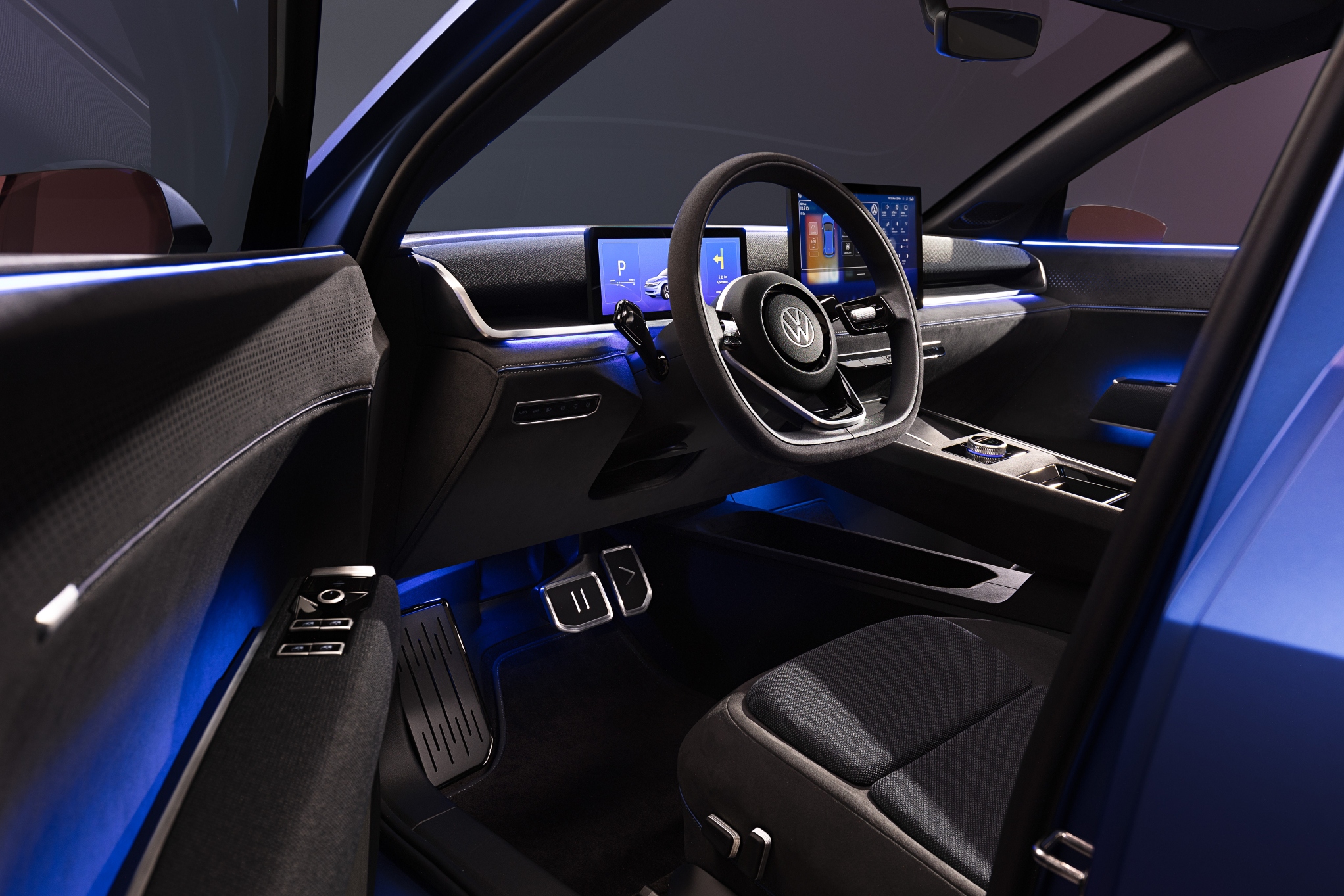
“The most important value for Volkswagen design is stability,” says Andreas Mindt. This includes value stability, stability of form, reliability and recognisability. “A second core element of the brand is likeability,” explains the designer. The Beetle, Volkswagen bus, new Beetle and ID. Buzz clearly demonstrate this.
“Stability and likeability – we have to achieve these two values in every respect.” But there is much more to a successful Volkswagen than that: “We also want to create excitement in our customers.” For example, with added dynamics, improved operability or the classic “form follows function” of an ID. Buzz or Golf. Technologies, forms and concepts are what make a Volkswagen desirable. Stability, likeability and excitement are typical characteristics of the Volkswagen design, the Volkswagen feeling. Mindt assigns three design elements to each of these three values.
Are you seriously considering your first or next EV? Then visit Electric Road’s CAR FINDER to get the right car for you!
A charismatic stability element is the C-pillar design originally developed for the first Golf, which evokes the tensioned string of a bow pointing in the direction of travel. The Chief Designer has created a new interpretation of this element as a general feature of compact Volkswagen models. The ID. 2all is the first Volkswagen with this new C-pillar signature.
Andreas Mindt: “The C-pillar is the backbone of the Volkswagen design. In the ID. 2all, the stability of the C-pillar initially flows from the backbone into the side body elements.” The C-pillar is drawn into the side contour of the silhouette and thus shapes a completely new but still typical Volkswagen design, as was shown by the Golf 7, for example.
The second stabilising element is the completely straight side contour between the A- and C-pillars. Mindt: “The window shoulder, the feature line underneath it and the side sill must establish a positive tension together with the front end. Just like on the ID. 2all.” This straight window line has been a characteristic style feature for generations of Volkswagen models over many decades.
The third element is what is known in designer language as the stance, the visual stability. Andreas Mindt: “The volume above the wheels must be reduced so that the vehicle appears to stand on the road in a stable way. That is the case with the ID. 2all.” A powerful stance creates a positive impression particularly when the front wheels are turned at an angle. In the case of the ID. 2all, stability therefore means the interaction of the C-pillar flowing powerfully into the side, the positive tension of the silhouette and the confident stance.
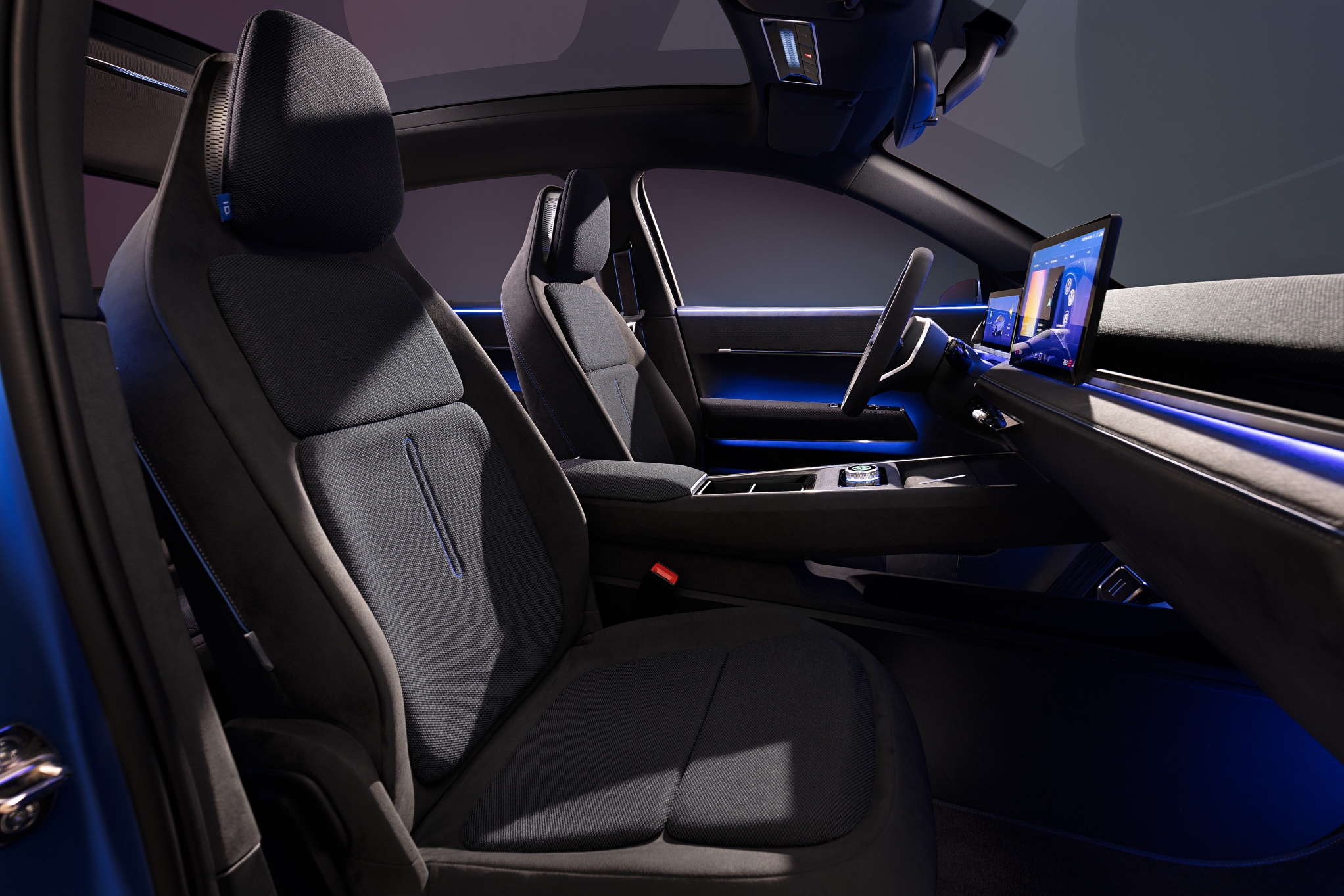
Automotive design is an art form, but there are still clear laws that apply such as the golden ratio. Andreas Mindt: “Likeability is created by the golden ratio. This is quite simply the ratio of three fifths to two fifths.” Leonardo da Vinci already followed this geometrical principle in works such as the Mona Lisa. The designer continues: “The feature line running below the window shoulder is located on exactly the golden ratio line of the ID. 2all. Both the Beetle and Golf also always followed the principle of the golden ratio.”
The second decisive element in terms of likeability is the design of the front end. Mindt: “The front of the ID. 2all is characterised by upwardly rising elements. The careful use of these elements creates a confident smile. It is important for us that the front of a Volkswagen shows a human expression. Just like the ID. 2all.”
THE TECHNOLOGY CONCEPT OF THE ID. 2ALL
The ID. 2all design is based on the evolutionary further development of the modular electric drive (MEB) platform. Kai Grünitz: “Its variability offers great benefits for customers, and the MEB’s scale effects let us inexpensively integrate technologies from higher classes into the ID. 2all. Every customer will benefit from this.”
Volkswagen plans to launch the production version of the ID. 2all with numerous technologies from larger ID. models. This will include the latest version of Travel Assist, a system for partly automated driving. Other features that will be used in the ID. 2all include IQ.LIGHT LED matrix headlights, 3D LED tail light clusters with horizontal LED strip between them, Park Assist Plus with memory function, ID.Light (intuitive light signals for the driver) and electric seats with massage function. A large panoramic sunroof creates an additional feel-good ambience in the interior.
Are you seriously considering your first or next EV? Then visit Electric Road’s CAR FINDER to get the right car for you!
The ID. 2all concept vehicle offers a clear design in the interior. The touch display (diagonal: 32.7 cm / 12.9 inches) of the infotainment system has a new menu structure. Below this there is a newly developed, separate air conditioning control panel. The main air-conditioning functions are controlled here using illuminated buttons. In the middle of the air conditioning control panel, easily accessible for both driver and front passenger, there is a practical small thumbwheel to adjust the volume of the infotainment system.
Located a level further down are two large inductive charging interfaces for smartphones, which are magnetically locked in position. Other vehicle functions are operated by means of a menu control in the centre console, which can also be used to change the look of the digital instruments. The new multifunction steering wheel is designed to be clear and self-explanatory, two thumbwheels on the left and right and two buttons each and nothing else.
The driver of the concept vehicle is provided with all important information on one visual axis by means of the digital cockpit (27.7 cm / 10.9-inch) and a head-up display. Smartphones are supplied with power by numerous USB-C interfaces (45 watts) in various locations in the interior and by magnetic holders with inductive charging function in the backrests of the front seats. All conceivable larger devices can be powered by a fully usable 230 V socket.
In addition, the interior of the concept vehicle offers maximum space efficiency. The detail solutions include a fold-down front passenger seat backrest: this creates a continuous load area that is 2.20 metres long when folded down in combination with the rear seat backrest, which can be folded down in a 40:60 split ratio and the luggage compartment floor. The luggage compartment with a capacity of 440 litres is designed in extra-large format.
As a highlight here, there is a rectangular stowage box under the double luggage compartment floor that can hold several bags of shopping from the supermarket, for example. There is a further stowage area with a capacity of 50 litres under the rear bench seat, which can be folded up in one easy movement. This stowage area was specially designed for the charging cable and items such as the first-aid kit, high-visibility waistcoats and breakdown set. In addition, there is sufficient space in this lockable (safe) compartment for larger devices such as laptops and tablets, which can also be charged there. When the rear bench seat is folded down, the luggage compartment capacity increases to 1,330 litres.
The powerful 166kW/226 PS electric motor of the Volkswagen is integrated into and drives the front axle, allowing the vehicle to accelerate from 0 to 100 km/h in less than 7 seconds. The battery permits a calculated WLTP range of up to 280 miles. At DC quick-charging stations, the battery can be charged from 10 to 80 per cent in 20 minutes. The battery is charged with up to 11kW at home or at public AC charging points.
Kai Grünitz emphasises: “The production version of the ID. 2all will be a full-value electric vehicle for every day of the year. A typical Volkswagen with sufficient space and a long range so that the destination can be reached without problems, even on long journeys. Thanks to the extremely variable MEB platform, our customers will also benefit from state-of-the-art technologies in the price class around 25,000 euros. Volkswagen is once more democratising progress here. And that is also exactly our goal.”
1 ID. 2all – the vehicle is a concept vehicle and is not available for sale
| Technical data of the ID. 2all | |
| Drive | MEB Entry, front-wheel drive |
| Power | 166 kW / 226 PS |
| Range | approx. 450 km (WLTP) |
| Charging time | 10 to 80% in approx. 20 min. |
| 0-100 km/h | < 7 s |
| Top speed | 160 km/h |
| Length | 4,050 mm |
| Width | 1,812 mm |
| Height | 1,530 mm |
| Wheelbase | 2,600 mm |
| Storage volume | 490 to 1,330 l |
| Wheels | 225/40 R20 |


